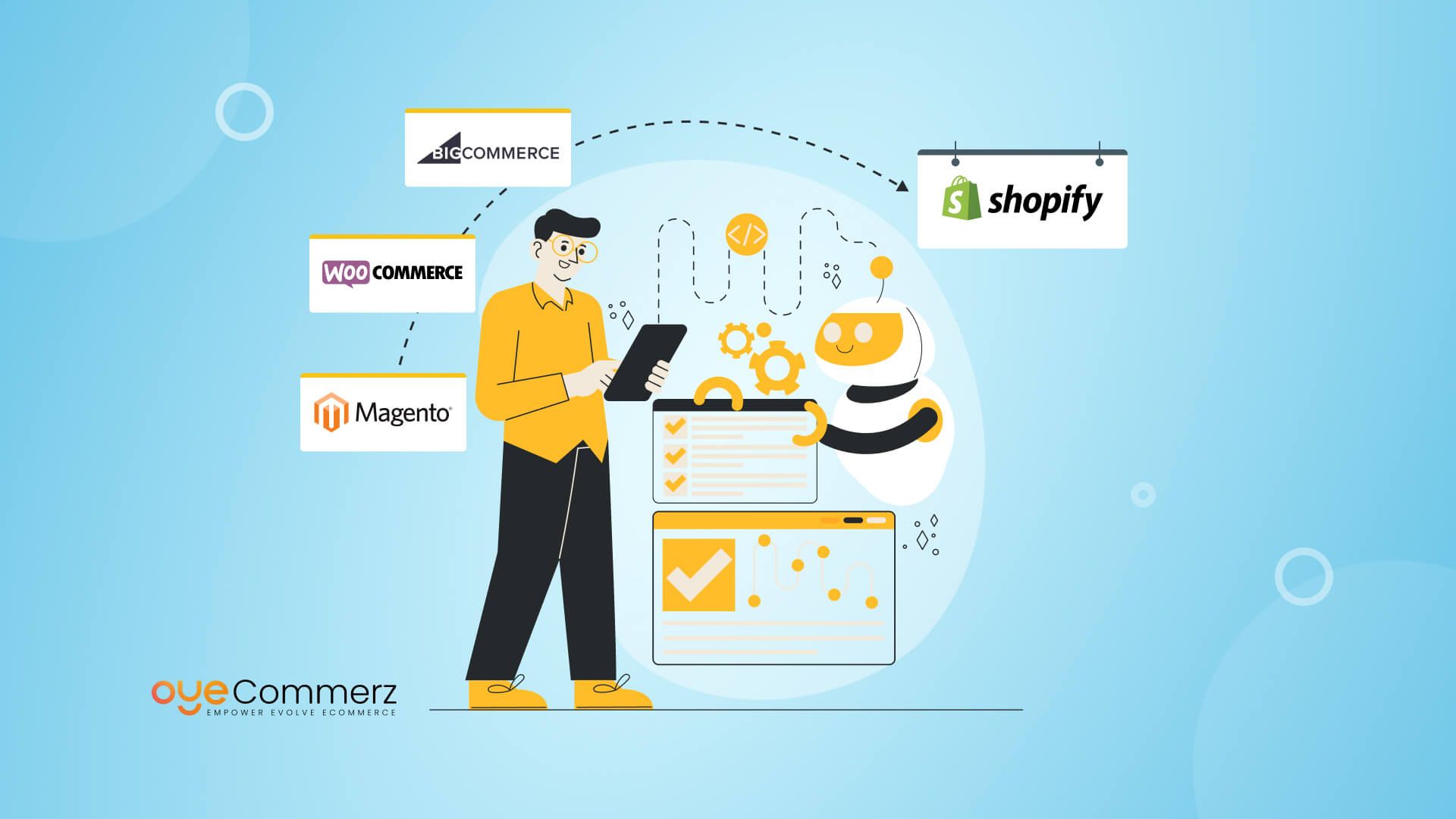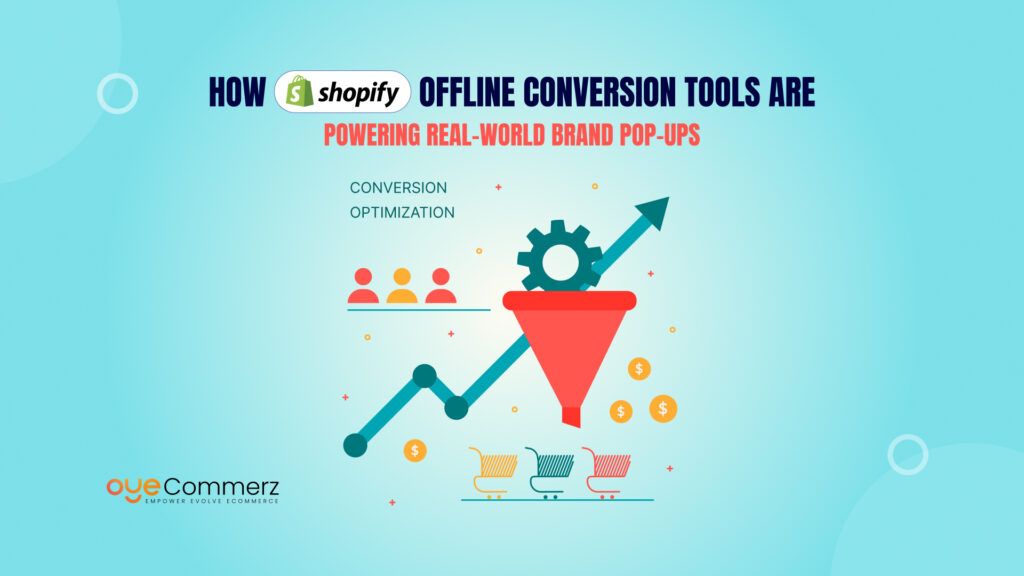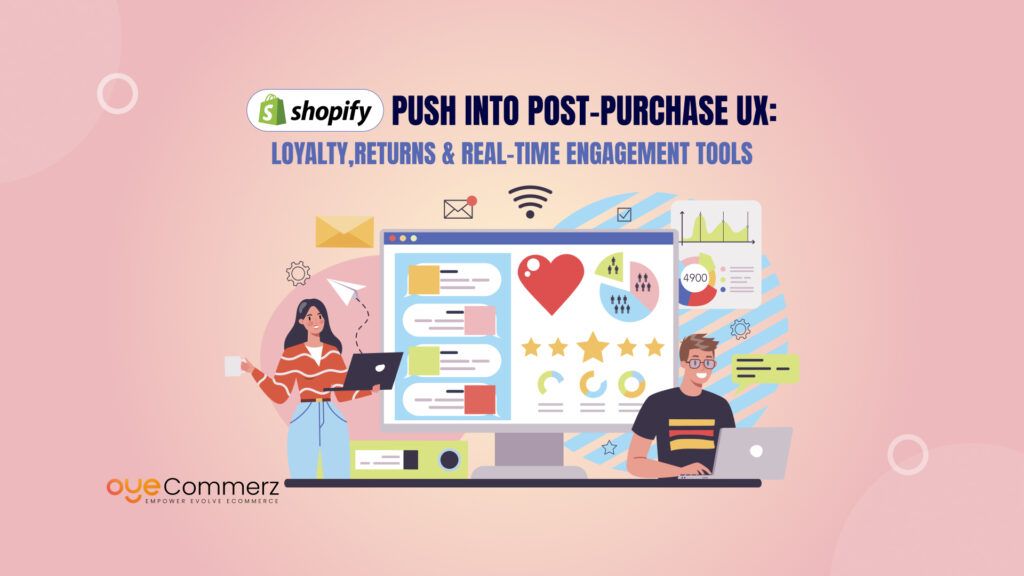E-commerce is growing fast, and businesses need platforms that can keep up with their growth. Many online store owners are switching to Shopify because it offers better performance, security, and scalability. It’s a powerful platform that makes it easier to manage high sales volumes without technical headaches.
However, moving an online store from WooCommerce, Magento, or BigCommerce to Shopify isn’t always easy. Traditional migration methods can be slow, complicated, and risky. This is where AI and automation come in. With AI-powered migration tools, businesses can transfer their stores faster, more accurately, and without downtime. AI helps map data correctly, fix errors, and ensure everything runs smoothly making migration to Shopify stress-free.
Table of Contents
ToggleWhy Businesses Are Migrating to Shopify
As businesses grow, they need an eCommerce platform that can keep up with increasing customer demand, large product catalogs, and high order volumes. Many store owners who started with WooCommerce, Magento, or BigCommerce eventually face challenges that slow down their growth. That’s why more businesses are making the switch to Shopify, a platform designed for high performance, scalability, and ease of use.
Limitations of WooCommerce, Magento, and BigCommerce
While WooCommerce, Magento, and BigCommerce are popular eCommerce platforms, they come with significant challenges:
- Performance Issues & Slow Loading Times
- As stores grow, adding more products and handling more visitors can slow down website performance.
- WooCommerce and Magento rely on self-hosted solutions, meaning businesses must optimize their hosting, databases, and caching for better speed.
- Slow-loading websites can frustrate customers and reduce conversion rates.
- High Maintenance & Management Costs
- WooCommerce and Magento require frequent updates to keep the store running smoothly.
- Businesses often need a dedicated developer or IT team to manage bugs, software updates, and security patches.
- Hosting costs for WooCommerce stores can become expensive as traffic increases.
- Security Risks & Data Vulnerabilities
- WooCommerce and Magento store owners must handle their own security, which includes SSL certificates, PCI compliance, and data protection.
- If security updates are missed or configured incorrectly, stores become vulnerable to hacks and data breaches.
- Shopify, on the other hand, comes with built-in security features that meet the highest industry standards.
- Scalability Challenges
- Magento and WooCommerce require additional server resources and technical optimization to scale up.
- High-traffic periods, such as Black Friday sales, can cause site slowdowns or crashes if the server isn’t properly configured.
- Shopify offers unlimited bandwidth and a powerful cloud-based infrastructure that handles large traffic spikes without downtime.
- Technical Complexity
- Magento and WooCommerce require coding knowledge to customize the store, manage extensions, and optimize performance.
- BigCommerce, while easier to use, still lacks the flexibility and advanced automation features that Shopify provides.
Why Shopify Is the Best Choice for Growing Businesses
Unlike WooCommerce, Magento, and BigCommerce, Shopify is designed for high-growth businesses that need reliability, automation, and scalability. Here’s why businesses are switching:
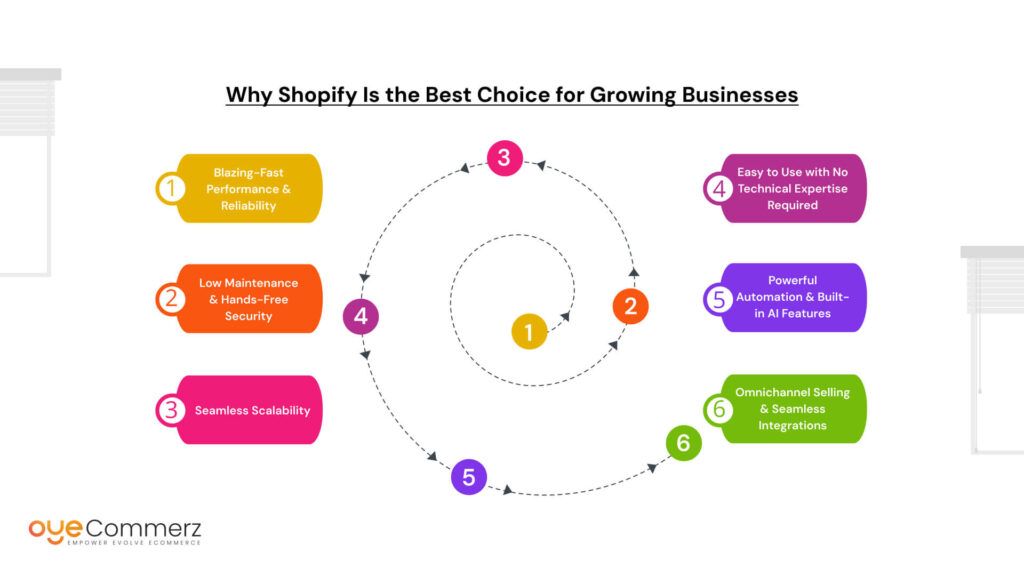
- Blazing-Fast Performance & Reliability
- Shopify is a fully hosted solution with built-in optimization for speed and performance.
- Stores load quickly, even with thousands of products and high visitor traffic.
- No need to worry about hosting, caching, or downtime Shopify handles it all.
- Low Maintenance & Hands-Free Security
- Shopify takes care of software updates, security patches, and hosting, so businesses can focus on sales and growth.
- It includes SSL certification, PCI compliance, and fraud detection tools to protect customer data.
- Seamless Scalability
- Whether a store processes 100 orders or 100,000 orders a day, Shopify can handle the load effortlessly.
- Shopify’s cloud infrastructure ensures no crashes or slowdowns during peak sales events like Black Friday & Cyber Monday.
- Easy to Use with No Technical Expertise Required
- Unlike Magento and WooCommerce, Shopify doesn’t require coding skills to customize themes, set up marketing campaigns, or manage orders.
- The drag-and-drop interface makes it simple to update products, track sales, and make design changes instantly.
- Powerful Automation & Built-in AI Features
- Shopify includes Shopify Flow, an automation tool that helps businesses streamline order processing, inventory updates, and customer notifications.
- AI-powered chatbots and personalized marketing tools improve customer engagement and retention.
- Shopify also integrates seamlessly with third-party AI tools for advanced analytics and sales forecasting.
- Omnichannel Selling & Seamless Integrations
- Sell across multiple platforms, including Amazon, Instagram, Facebook, and TikTok, directly from Shopify.
- Easily integrate with apps and ERP systems for smooth business operations.
For businesses struggling with frequent website crashes, high maintenance costs, security risks, and scalability issues, Shopify offers a powerful, hassle-free solution. It provides speed, security, automation, and seamless migration tools to ensure a smooth transition from WooCommerce, Magento, or BigCommerce.
The best part? AI and automation have made Shopify migrations faster and more efficient than ever before. Businesses no longer need to worry about downtime, data loss, or complex manual processes AI-powered migration solutions take care of everything.
Traditional vs. AI-Powered Migration: What’s the Difference?
Migrating an online store from WooCommerce, Magento, or BigCommerce to Shopify is a crucial process that involves transferring data, setting up integrations, and ensuring everything works correctly. Traditionally, this process required manual effort, which often led to delays, errors, and data loss. However, with AI and automation, businesses can now migrate seamlessly, with greater speed and accuracy.
1. Traditional Migration: Slow, Risky & Labor-Intensive
Before AI-powered tools, migration was a manual and complex process. Developers had to extract data, clean it up, and transfer it piece by piece while ensuring it remained intact. This method often caused:
- Data Loss: Missing product details, customer information, or order history due to manual errors.
- Long Downtime: The store might be offline during the migration, leading to lost sales and frustrated customers.
- High Costs: Businesses needed skilled developers and IT experts to manually map and transfer data.
- Inconsistent SEO & URLs: If not handled properly, URL changes could harm search rankings, affecting organic traffic.
2. AI & Automation in Migration: Faster, More Accurate, and Hassle-Free
With AI-driven migration, the process becomes efficient, accurate, and automated. AI-powered tools ensure:
- Faster Migration: AI speeds up data extraction, mapping, and transfer, reducing the time required from weeks to days.
- Error-Free Data Transfer: Machine learning algorithms detect and fix inconsistencies in product details, customer data, and order history.
- Zero Downtime: The migration happens in the background while the live store remains fully operational.
- SEO & URL Redirection Management: AI automatically maps old URLs to new ones, preserving SEO rankings.
- Automated App & Plugin Compatibility Checks: AI ensures that third-party apps and integrations function correctly after migration.
Comparison Table: Traditional vs. AI-Powered Migration
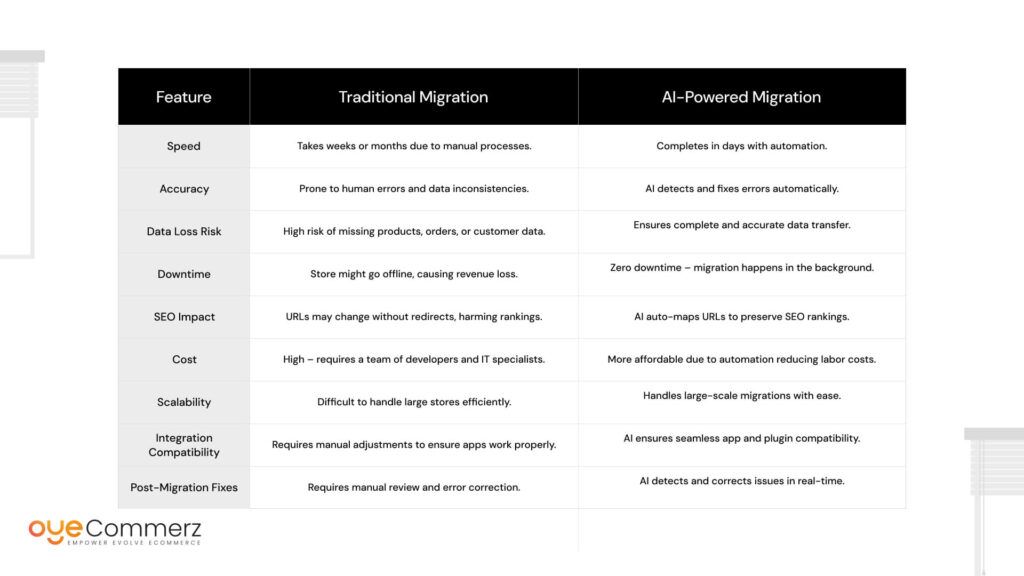
Why AI-Powered Migration is the Future
AI and automation have transformed the way eCommerce migrations are handled. Instead of spending weeks or months on manual data transfers, businesses can now move to Shopify quickly, securely, and without downtime.
For store owners looking to switch from WooCommerce, Magento, or BigCommerce, choosing an AI-powered migration solution ensures a smooth, efficient, and error-free transition helping them focus on growth instead of technical challenges.
How AI and Automation Streamline Migration to Shopify
Migrating an online store from WooCommerce, Magento, or BigCommerce to Shopify can be a complex process. Without the right approach, businesses risk losing important data, facing downtime, and encountering errors that can impact sales and operations.
This is where AI and automation make a huge difference. These technologies eliminate manual errors, speed up the migration process, and ensure a smooth, accurate, and efficient transition without affecting the store’s performance.
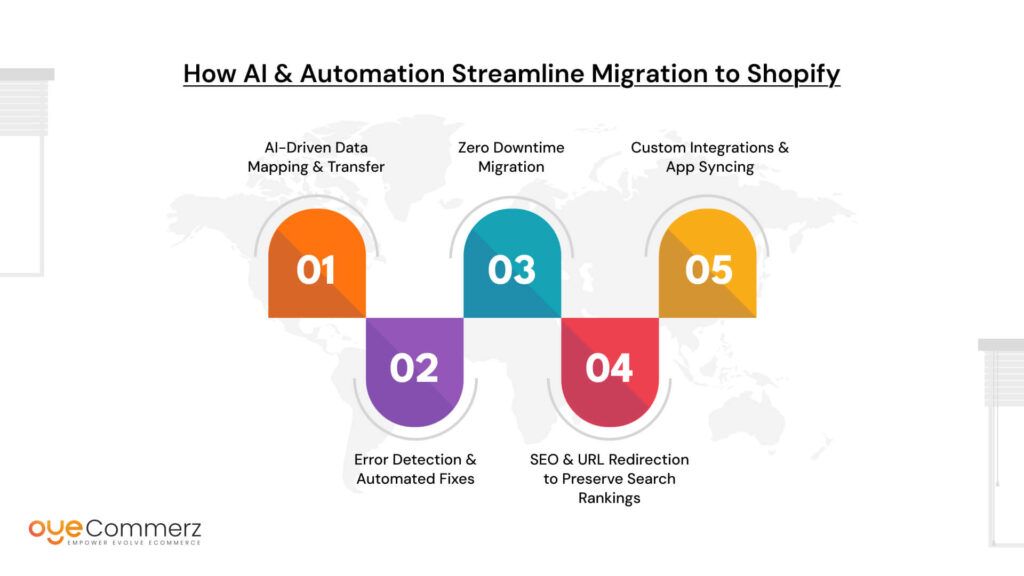
1. AI-Driven Data Mapping & Transfer
One of the biggest challenges in migration is transferring data accurately from one platform to another. Different eCommerce platforms store product details, customer information, and order history in different formats.
🔹 How AI Helps:
- AI-powered tools automatically map data fields from the old platform to Shopify, ensuring correct product details, pricing, images, categories, and customer records are transferred.
- No manual input required AI understands platform differences and adjusts data accordingly.
- Even if Shopify has a different data structure, AI ensures all critical information is placed in the right format.
Example: Instead of manually mapping thousands of products from Woocommerce to Shopify, AI automates this process, reducing migration time from weeks to days.
2. Error Detection & Automated Fixes
When migrating data manually, businesses often encounter duplicate records, missing values, incorrect product descriptions, and formatting errors. Fixing these issues manually is time-consuming and increases the risk of post-migration problems.
🔹 How AI Helps:
- AI scans and identifies inconsistencies in product details, customer information, and order history before the migration begins.
- It automatically corrects missing data, formatting errors, and duplicate entries, reducing the chances of post-migration issues.
- Businesses don’t need to manually review large datasets AI ensures the data is clean and structured before it moves to Shopify.
Example: If a Magento store has customer records with missing email addresses, AI flags these issues and either retrieves missing data or removes incomplete records to ensure database integrity.
3. Zero Downtime Migration
One of the biggest fears during migration is downtime, where the store goes offline, leading to lost sales and frustrated customers. Traditional migration methods often require businesses to temporarily shut down their online store while data is transferred.
🔹 How AI Helps:
- AI and automation allow real-time migration, where data is transferred in the background without affecting the live store.
- Customers can continue shopping while the transition happens.
- AI ensures that orders placed during migration are tracked and synced so that no sales data is lost.
Example: A BigCommerce store moving to Shopify can continue processing orders while AI handles the migration in the background, ensuring zero impact on revenue.
4. SEO & URL Redirection to Preserve Search Rankings
A poorly executed migration can harm SEO rankings, as search engines rely on existing URLs, metadata, and backlinks. If URLs change without proper redirection, a store may lose its organic traffic.
🔹 How AI Helps:
- AI-powered migration tools automatically set up 301 redirects, ensuring that old URLs from WooCommerce, Magento, or BigCommerce redirect visitors to their new Shopify equivalents.
- AI optimizes metadata, alt text, and product descriptions to maintain SEO strength.
- It ensures that search engines don’t treat the new Shopify store as a completely different website, helping businesses retain their rankings and organic traffic.
Example: If a product page on Magento had the URL www.example.com/product/shoes123, AI ensures it redirects to www.example.com/products/shoes123 on Shopify without breaking SEO rankings.
5. Custom Integrations & App Syncing
Most eCommerce stores rely on third-party apps and integrations for payments, shipping, marketing, and analytics. A major challenge during migration is ensuring these apps continue working seamlessly.
🔹 How AI Helps:
- AI automatically identifies the apps and plugins used on the previous platform and suggests Shopify-compatible alternatives.
- It ensures that payment gateways, email marketing tools, inventory systems, and CRM platforms are properly configured on Shopify.
- AI can auto-sync data between old and new apps, ensuring that order history, customer details, and inventory levels remain accurate.
Example: If a WooCommerce store uses Mailchimp for email marketing, AI ensures that the same customer segments and email lists are properly integrated into Shopify’s Mailchimp app without data loss.
Real-World Benefits of AI-Driven Shopify Migration
AI-powered migration is transforming how businesses move from Magento, Woocommerce, and BigCommerce to Shopify, making the process faster, more accurate, and cost-effective. Here’s how companies benefit from AI-driven migration:
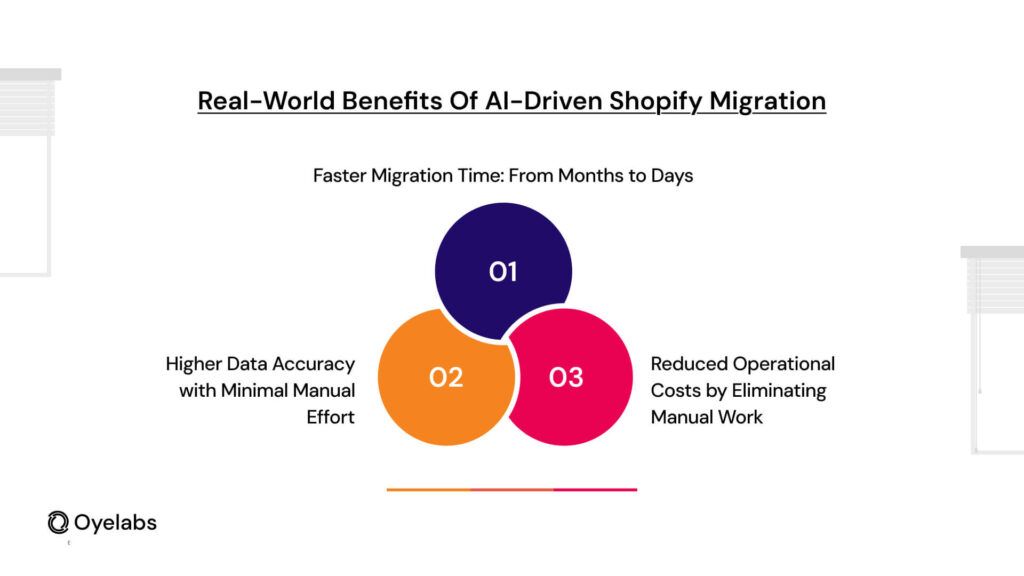
1. Faster Migration Time: From Months to Days
Traditional migration methods can take weeks or even months, depending on store size and complexity. AI speeds up this process significantly.
🔹 How?
- AI automates data mapping and transfer, reducing manual workload.
- It processes bulk data efficiently, completing migration in days instead of weeks.
Example: A Magento store with 50,000+ products would take months to migrate manually. With AI, the process is completed in a few days, minimizing disruption.
2. Higher Data Accuracy with Minimal Manual Effort
Manual migration increases the risk of missing products, incorrect order history, and duplicate customer records. AI ensures data is transferred correctly and consistently.
🔹 How?
- AI automatically detects and fixes errors in product details, pricing, and customer records.
- Prevents data loss by ensuring every record is accurately mapped to Shopify.
Example: A BigCommerce store moving to Shopify had thousands of customer records with duplicate email entries. AI identified and merged duplicates automatically, ensuring clean data transfer.
3. Reduced Operational Costs by Eliminating Manual Work
Manual migration requires developers, IT specialists, and data analysts, increasing costs. AI eliminates most manual work, making migration more affordable.
🔹 How?
- AI handles data transfer, error detection, and SEO management without requiring a large technical team.
- Businesses save on developer fees and post-migration fixes.
Example: A WooCommerce store saved over 50% on migration costs by using AI-driven automation instead of hiring a team of developers for data transfer.
AI-driven migration saves time, reduces errors, and lowers costs, allowing businesses to seamlessly move to Shopify without disruptions. It’s the future of hassle-free eCommerce migration!
Choosing the Right AI Migration Partner – Why Oyecommerz?
Migrating to Shopify is a big step, and choosing the right AI-powered migration partner makes all the difference. Oyecommerz ensures a seamless, secure, and scalable transition with cutting-edge AI and automation.
1. Proven Expertise in AI-Driven Migrations
Oyecommerz specializes in migrating stores from WooCommerce, Magento, and BigCommerce to Shopify using AI automation. Our team has successfully migrated hundreds of businesses, ensuring data integrity and minimal disruptions.
🔹 Why it matters?
- AI-powered data transfer eliminates manual errors and reduces migration time.
- Ensures smooth integration of apps, plugins, and third-party tools.
2. Zero Downtime Assurance
We know downtime means lost sales. That’s why Oyecommerz guarantees a zero downtime migration, allowing you to continue selling while we handle the transition in the background.
🔹 How we do it?
- Real-time data syncing ensures orders, products, and customer records stay updated.
- Your old store remains fully functional until the Shopify store is live.
3. Secure & Scalable Migration
Data security and scalability are at the heart of our AI-driven migration approach. Whether you have thousands of SKUs or complex databases, we ensure your data is transferred accurately and securely.
🔹 Key benefits:
- AI-powered error detection and correction prevent data loss.
- Future-proof scalability, so your Shopify store can grow with your business.
4. Post-Migration Support for Continuous Growth
Moving to Shopify is just the beginning. Oyecommerz provides post-migration support, ensuring you get the most out of your new platform.
🔹 What we offer?
- SEO & URL redirection to maintain rankings and traffic.
- Performance optimization for speed, security, and user experience.
- Ongoing app integrations and store enhancements.
Get Started with a Smooth, Stress-Free Migration
Switching to Shopify doesn’t have to be complicated. Let Oyecommerz handle everything while you focus on running your business.
Ready to migrate? Contact Oyecommerz today and experience a fast, secure, and hassle-free Shopify migration!
Ready to Migrate to Shopify ? Let Us Help You Make the Switch!
Conclusion: The Future of AI in eCommerce Migrations
AI and automation are revolutionizing eCommerce migrations, transforming what used to be a complex and time-consuming process into a seamless, efficient experience. With AI, businesses can use woocommerce to shopify migration services quickly, accurately, and without downtime, ensuring that their data, SEO, and operations remain intact.
As eCommerce Technology evolves, AI-driven migration is no longer just an option, it’s the future. Embracing these technologies will future-proof your online store, allowing you to scale, innovate, and compete in an increasingly digital world.
Frequently Asked Questions
In the context of technology migration (such as platform, data, or application migration), AI is used to streamline, optimize, and reduce risks involved in the migration process. Here’s how AI is applied:
Automated Data Mapping: AI can intelligently analyze data structures and relationships across systems to automatically map data fields between the source and destination platforms.
Error Detection and Correction: Machine learning models can identify inconsistencies or anomalies in data that may cause errors during migration and can suggest or apply fixes.
Migration Planning: AI can analyze historical data, system usage patterns, and workflows to generate an optimized migration strategy with minimal downtime.
Dependency Analysis: AI tools can evaluate system dependencies (such as scripts, plugins, or database relations) to ensure a complete and smooth migration.
Testing and Validation: AI can run predictive and regression tests on migrated environments, ensuring everything works as expected post-migration.
Performance Optimization: After migration, AI can help fine-tune system performance based on user behavior and system metrics.
In eCommerce migrations (e.g., Magento to Shopify), AI can also:
Tag and categorize products more efficiently
Migrate SEO data intelligently
Predict customer behavior post-migration to guide UX and marketing updates
AI enhances data migration through automation, accuracy, and real-time decision-making. Here are some specific benefits:
| Task | How AI Helps |
|---|---|
| Data Cleansing | AI identifies duplicate, outdated, or corrupt records and suggests corrections before migration. |
| Schema Matching | Automatically aligns different database structures by learning data patterns and relationships. |
| Data Transformation | Converts data formats and structures to match the new system, using rules learned from existing patterns. |
| Predictive Risk Management | Forecasts potential issues in the migration process and recommends preventive actions. |
| Real-time Monitoring | Tracks migration progress, detects anomalies, and generates alerts for human review or automatic fixes. |
| Post-Migration Testing | Uses machine learning to compare datasets and system behavior pre- and post-migration, ensuring integrity. |
This minimizes manual effort, reduces human error, and speeds up the migration timeline, especially in large-scale enterprise environments.
AI is fundamentally reshaping how businesses operate across nearly every sector. Here’s an overview of the transformation:
a. Manufacturing
Predictive maintenance using IoT and AI sensors
Automated quality control with computer vision
AI-driven production planning
b. Healthcare
AI diagnostics for medical imaging and pathology
Personalized treatment plans using patient data
Drug discovery and simulation modeling
c. Retail and eCommerce
Personalized product recommendations
AI-powered chatbots and virtual shopping assistants
Inventory forecasting and demand prediction
d. Finance
Fraud detection using behavioral analysis
Robo-advisors for wealth management
Automated credit scoring and underwriting
e. Marketing and Customer Experience
Hyper-personalized campaigns based on predictive analytics
Sentiment analysis and brand monitoring
Dynamic pricing strategies
f. Transportation and Logistics
Route optimization using real-time data
Predictive supply chain management
Autonomous vehicles and drones
g. Software Development
AI-assisted coding (e.g., GitHub Copilot)
Intelligent testing and bug prediction
Natural language interfaces for non-developers
Artificial Intelligence is no longer just an enhancement it’s becoming a core enabler of digital transformation, helping organizations operate smarter, faster, and more efficiently.

